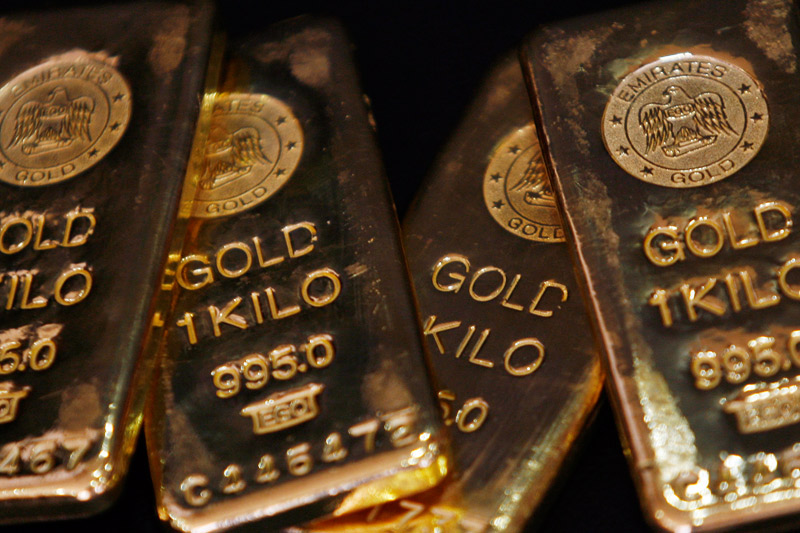Investing.com’s stocks of the week
By Barani Krishnan
Investing.com - Gold’s malaise continued Wednesday, with the yellow metal plumbing three-month lows below $1,800, as the dollar spiked on a brief surge in U.S. bond yields and equity markets turned red from profit-taking and reallocation of funds.
Gold for April delivery on Comex settled down $26.20, or 1.5%, at $1,772.80 per ounce, after losing 1.3% in the previous session.
All in, the benchmark gold futures contract has lost nearly $70, or 3.7%, since the settlement of Feb. 10, or a week ago. Wednesday’s tumble took it to a low of $1,768.55 at the time of writing — a bottom not seen since the November trough of $1,767.20.
“It’s all about yields,” said Fawad Razaqzada, analyst at ThinkMarkets. “Right now, the investor focus is fixated on bond yields which continue to rise due to growing expectations that inflation will be returning as the global economic recovery is expected to speed up.
“As result, investors have been moving out of bonds, causing their yields to rise. The news lifted the dollar further and also weighed on US stock indices.”
Yields on the U.S. 10-year Treasury note briefly spiked to 1.33%, their highest in a year.
That emboldened currency dabblers to drive up the dollar, gold’s archrival. The Dollar Index, which pits the greenback against six other currencies, hit a nine-day high of 90.88. There is speculation that the index could return to the 91 level, weighing further on gold.
“The dollar appears to be generating momentum and rising yields is further fueling it,” said Craig Erlam, analyst at online brokerage OANDA. “A move back towards $1,700 may be on the cards for gold.”
Eric Scoles, markets strategist at Chicago’s Blueline Futures, concurred with that. “Unless we see the market reject these prices and the idea of inflation is embraced, I can see gold falling back down to around $1700 in the near future.”
The idea of gold as an inflation hedge, or safe-haven against most economic and political troubles, has been repeatedly challenged in recent months, since vaccine breakthroughs for the Covid-19 pressured the yellow metal off August record highs of nearly $2,090.
With President Joe Biden embarking on a new $1.9 trillion stimulus after the near $4 trillion issued under his predecessor Donald Trump, the potential fiscal U.S. deficit and debt under such spending should weigh on the dollar rather than gold. Yet, the greenback has continued to defy attempts to keep it below the 90 reading on the Dollar Index and gold has suffered a series of setbacks instead in price.
Also, if inflation is indeed returning, then gold should be the beneficiary from that dynamic, rather than the dollar.
The geopolitical risk component that has held up gold for decades has almost vanished, too, with the yellow metal falling instead of rising from a recent flare-up in Middle East tensions.
